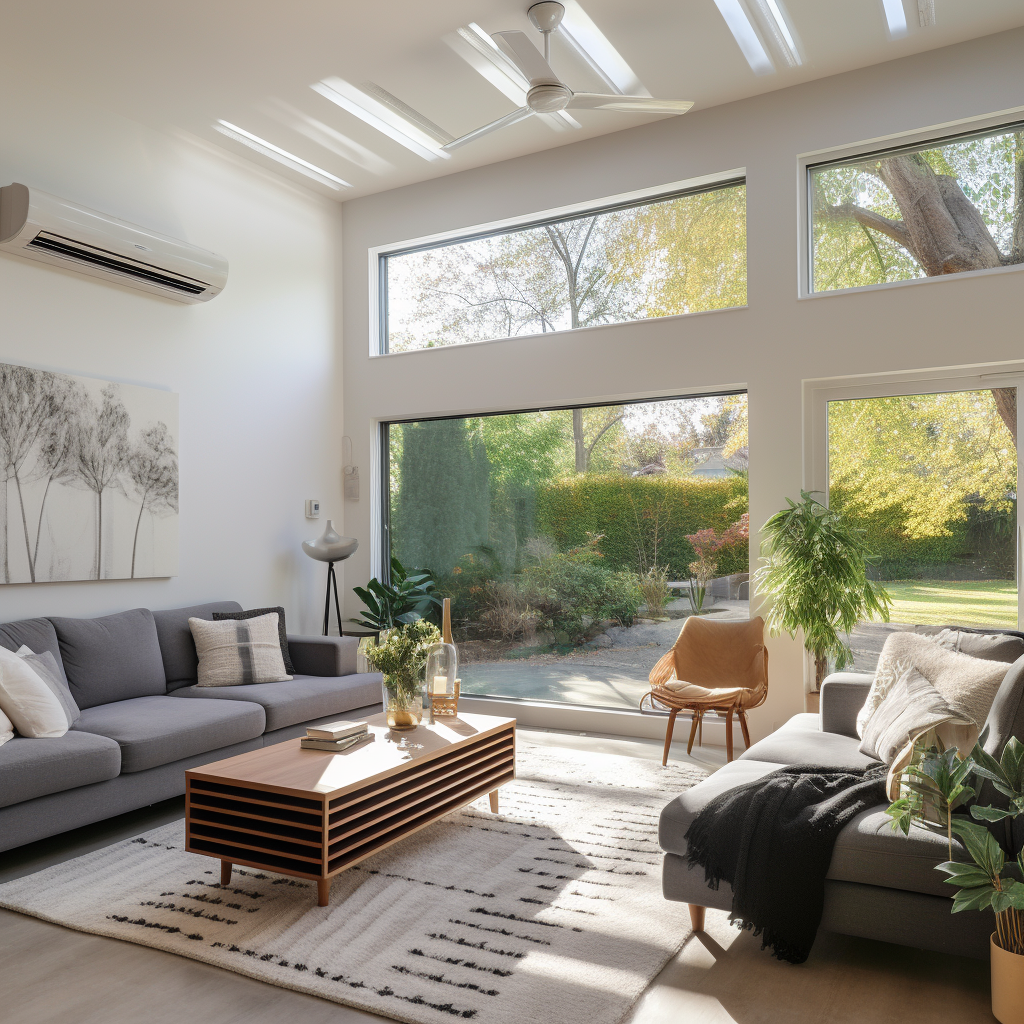Smart home technology is transforming the way we live, bringing greater convenience, energy efficiency, and comfort into households. Nowhere is this more evident than in the evolution of heating and cooling systems.
Modern air conditioning systems — once standalone units controlled by simple remotes — are now becoming fully integrated, intelligent parts of the smart home ecosystem.
In this article, we explore how smart HVAC integration works, the major benefits it offers, the different upgrade options available, and what you need to consider before upgrading your system.
What Is Smart HVAC Integration?
At its core, smart HVAC (Heating, Ventilation, and Air Conditioning) integration means connecting your air conditioning system to a broader home automation platform.
This allows you to:
- Control your system remotely via a smartphone, tablet, or computer.
- Use voice commands to adjust temperatures and modes.
- Set intelligent schedules based on your lifestyle.
- Optimise energy use automatically.
- Integrate with other smart home features like lighting, blinds, or security systems.
A smart HVAC system learns from your behaviour, reacts to environmental conditions (like a sudden cold snap!), and helps keep your home perfectly comfortable — while saving you money on energy bills.
Popular Smart Home Platforms and Compatible Air Conditioning Systems
If you’re building a smart home or upgrading your system, it’s important to understand which platforms your air conditioning system can integrate with.
Here’s a quick overview:
- Google Home: Works well with most major HVAC brands via smart thermostats or integrated Wi-Fi modules.
- Amazon Alexa: Offers broad compatibility with air conditioners and smart controllers.
- Apple HomeKit: Slightly more selective but increasingly supported by brands like Daikin and select controllers like Sensibo.
Popular air conditioning brands offering smart capabilities include:
- Daikin (e.g., Daikin Altherma and split systems with Wi-Fi modules)
- Mitsubishi Electric (MSZ-AP Wi-Fi series)
- Fujitsu (Lifestyle Range with anywAiR technology)
- ActronAir (Que Smart Air Conditioning Control System)
Some systems come with native app controls (Wi-Fi built-in), while others require add-on smart controllers to connect with your smart home platform.
Key Features of Smart Air Conditioning Systems
When you integrate smart technology with your air conditioner, you unlock a range of useful features:
1. Remote Access and Control
Imagine leaving work on a 38°C Melbourne afternoon and cooling your home before you even step through the door. Smart apps lets you adjust your system from anywhere, reducing wasted energy and ensuring maximum comfort.
2. Voice Activation
With voice assistants like Google Assistant and Alexa, you can control your air conditioning hands-free:
“Hey Google, set the living room to 22 degrees.”
Perfect for busy households juggling cooking, kids, and entertainment.
3. Smart Scheduling
Program your air conditioner to match your daily routines automatically:
- Wake up to a gently warmed home on winter mornings.
- Turn off cooling automatically when everyone leaves for work or school.
- Pre-cool living areas in the late afternoon, just in time for family dinners.
4. Room Zoning and Individual Temperature Control
Advanced ducted systems (like ActronAir’s ESP Platinum Series) allow individual room control — keeping different areas at customised temperatures. This avoids the energy waste of cooling or heating unoccupied spaces.
5. Energy Monitoring and Reports
Many smart air conditioning systems can monitor energy use and suggest optimisations.
Apps can show you daily, weekly, and monthly usage reports — a powerful tool to control energy bills.
Benefits of Integrating Smart Technology with Your HVAC System
Save on Energy Bills: Intelligent schedules, remote access, and room zoning all help lower running costs.
Enhanced Comfort: Maintain consistent temperatures based on your personal preferences and lifestyle.
Better Environmental Impact: Reduce unnecessary energy consumption and contribute to a greener future.
Future-Proof Your Home: Smart-ready homes are increasingly attractive to buyers in competitive real estate markets.
Increased Control and Flexibility: Manage your home’s environment no matter where you are — on holiday, at work, or relaxing on the couch.
How to Upgrade Your Existing Air Conditioner to Smart Technology
Depending on your current setup and budget, there are a few ways to bring smart capabilities to your HVAC system:
Option 1: Smart Controllers
Devices like the Sensibo Sky, Airtouch 5, or Ambi Climate connect to your existing split-system or ducted system and add Wi-Fi control capabilities.
Pros:
- Affordable
- Easy to install (DIY or professional)
- Compatible with many older models
Cons:
- Limited integration compared to full system upgrades.
- May rely on infrared signals like a traditional remote.
Option 2: Full Smart AC System Upgrade
Modern systems like the Daikin Split System Series or Mitsubishi Electric Wi-Fi models have Wi-Fi modules built-in or easily added.
Pros:
- Native app control without third-party devices.
- Seamless integration with smart home platforms.
- Improved energy efficiency with new inverter technologies.
Cons:
- Higher upfront cost compared to retrofitting.
Professional Tip:
If your system is more than 10–12 years old, upgrading to a new, energy-efficient smart system may pay for itself through lower electricity bills within a few years.
Important Considerations Before Integrating Smart HVAC
Before diving into smart home integration, make sure to:
- Check Wi-Fi Strength: Good connectivity is critical for reliable control.
- Ensure Platform Compatibility: Double-check that your system can work with Google, Alexa, or Apple HomeKit.
- Secure Your Devices: Use strong passwords, regularly update apps and firmware, and secure your network against cyber threats.
- Plan for Maintenance: Just like standard systems, smart HVAC systems still need regular servicing to perform optimally.
Future Trends: What’s Next for Smart Air Conditioning?
The next wave of smart HVAC technologies is already here — or just around the corner:
- AI Predictive Learning: Systems that anticipate your needs based on behaviour and weather predictions.
- Integration with Solar Batteries: Automatically use stored solar energy to power your air conditioning.
- Carbon Tracking: Systems that show your environmental impact and offer green optimisation suggestions.
- Predictive Maintenance: Apps that detect potential faults early and alert you before breakdowns occur.
Investing in smart HVAC technology today means setting your home up for even greater efficiency, convenience, and environmental stewardship tomorrow.
Conclusion
Integrating smart home technology with your air conditioning system is one of the smartest (and most rewarding) home upgrades you can make. It’s not just about convenience — it’s about better living, smarter energy use, and future-proofing your most important asset: your home.
Whether you’re retrofitting your existing system with a smart controller or installing a brand-new smart-ready ducted or split system, the possibilities for comfort, savings, and control are endless.





